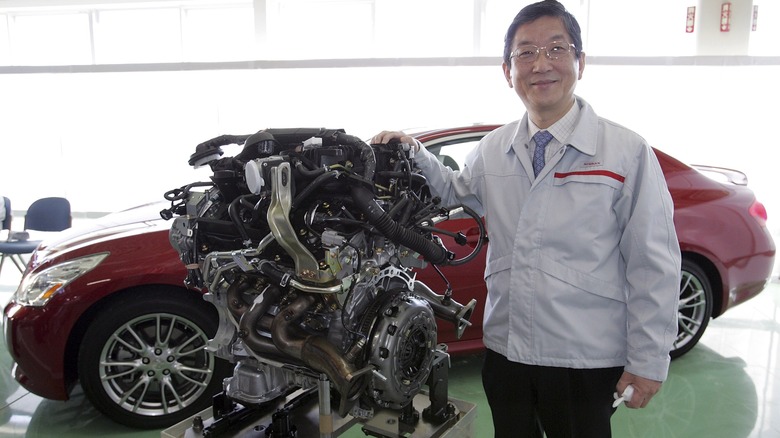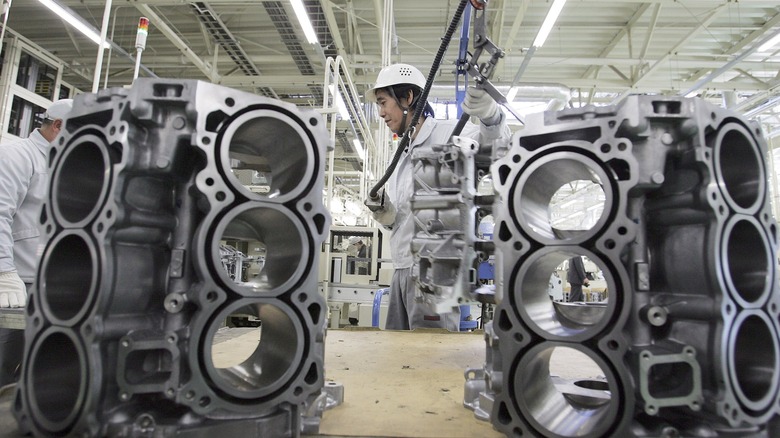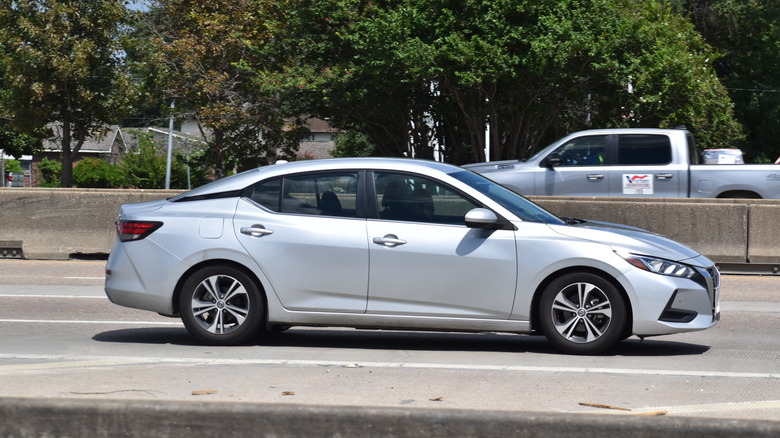The Pros & Cons Of The VQ Engine: Everything You Need To Know
As an automotive company with a pedigree of excellent cars dating back to the 1930s, Nissan has done its fair share of tinkering when it comes to engines. You certainly don't become one of the biggest names in cars by sitting on your proverbial laurels, after all. The 1990s, in particular, were a great decade for Nissan, producing some of the brand's most iconic vehicles, not to mention some of its best developments in the parts department.
One of the most well-received Nissan engines of the modern age originally debuted 30 years ago in 1994. This engine, which made its headliner appearances in the Nissan Maxima and Infiniti i30, was the first VQ engine. Since that fateful debut, the VQ engine series has become one of Nissan's standbys, and a major fan-favorite besides. But what exactly was it that made these engines so special, and what's worth considering about them in the modern context?
VQ engine history and specs
The original iteration of the VQ engine was present in vehicles like the Nissan Skyline, where it made quite a splash. The engine sported an aluminum body with options for 2.0, 2.5, and 3.0-liter displacements. When equipped with the 3.0 displacement, you could get around 205 lbs-ft of torque and 190 hp. The engine's lightweight body and components made it a good standby option for mid-range cars, though compared to other engines on the market at the time, it was, unfortunately, a bit lacking in a few key departments.
Following the initial lackluster appearance of the VQ engine, Nissan shelved the concept for eight years, bringing it back in vehicles like the Nissan 350z, Pathfinder, and Altima, as well as modern Infiniti SUVs. This updated version of the engine featured a new 4.0 displacement along with improved fuel efficiency, updated emissions standards, and a nice little speed boost getting it up to a fierce 300 hp.
Pros of the VQ
The Nissan VQ engine has become a favorite of automotive tinkerers and enthusiasts thanks to its modularity and the ability for owners to modify it. The VQ35HR engine, for example, features a strengthened body, which makes it better at handling intense RPM levels. This, in turn, makes it much easier to safely tune up and soup up. Since it's still a relatively small and cheap engine, this makes it an excellent choice for quickly adding a lot of power potential to a hobby car.
While it may be a cheaper engine, though, Nissan doesn't skimp on quality. VQ engines have excellent life spans, able to last more than 200,000 miles when kept in good shape. After getting outdone in the fuel efficiency department back in the 1990s, Nissan also made that a major priority without reducing the engine's muscle. The VQ35DE gets a quality 22 miles to the gallon.
Cons of the VQ
Unfortunately, even the best engines in the world may have a couple of hiccups in design. The VQ engines, while being excellent for general power and fuel economy, have some particular weaknesses. One of the biggest problems with VQ engines is their thirst for oil. Compared to similar engines on the market, these engines burn through oil at a faster rate, necessitating frequent changes with high-quality oil products. There have also been occasional reports of oil leaks due to heat and pressure-warped valve cover gaskets.
Aside from the oil, there's also the matter of the timing chain. Before the VQ, Nissan engines like the VG series used a regular timing belt. The VQ, on the other hand, uses a timing chain, which allows for much greater power output at the cost of reduced stability. The chains wear through much faster than belts, which means you may need to get them serviced or replaced at shorter intervals.



